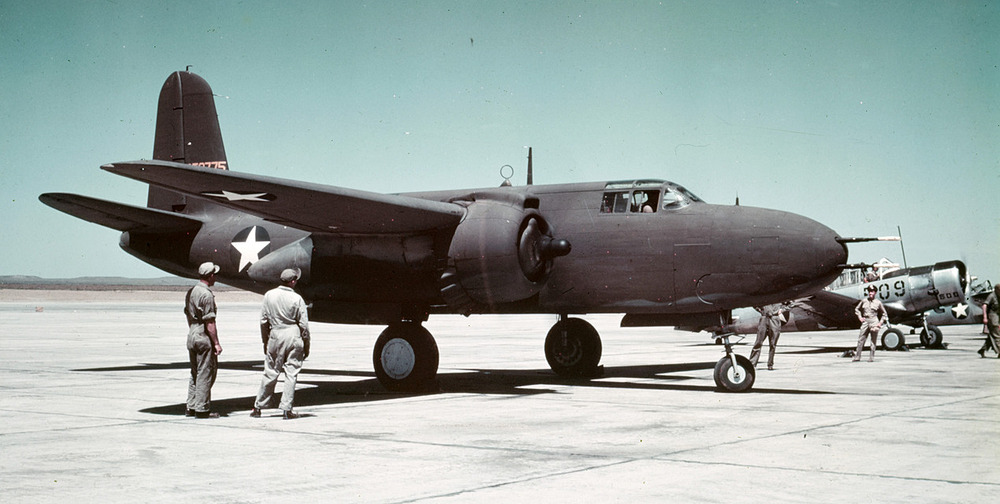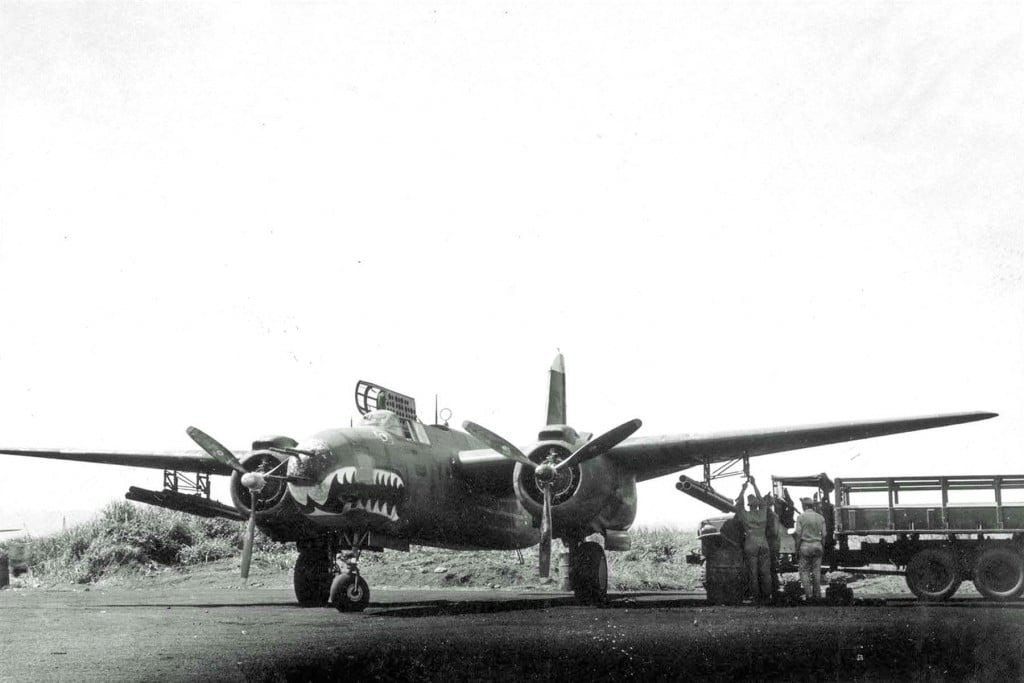Would you like to see this in-game?
Douglas A-20G-1 Havoc
Hello everybody. Seeing that the A-20 series is currently underrepresented in War Thunder, I’d like to suggest the specific A-20G-1 Havoc and have suggested the other variants to help complete the family of this iconic light attack bomber for the US aviation tree.
The A-20G was the most numerous and widely produced variant of the Havoc series. However, a lesser-known subvariant is that the very first production block, the A-20G-1, was fitted with a monster armament configuration: four 20 mm cannons and two 0.50-caliber machine guns mounted in the nose, making one of the most heavily armed attack aircraft of the A-20 family.
History
The A-20G marked a definitive turning point in the development of the Havoc series, departing from the earlier glass-nosed light bombers in favor of a dedicated gunship configuration. In place of the bombardier’s station, a solid nose was fitted, armed with four 20 mm cannons and two 0.50-inch machine guns, greatly enhancing the aircraft’s forward firepower. This modification, which made the A-20G slightly longer than its predecessors, was a direct result of combat experience in the South Pacific, where A-20B and A-20C variants had been frequently modified in the field for low-level strafing missions.
The A-20G-1 was first ordered on June 1, 1942, and A-20G production would begin at the Douglas Santa Monica plant in March 1943.
Only the first production block, the A-20G-1-DO, was equipped with the original nose armament of four 20 mm cannons and two .50-caliber machine guns. These early aircraft retained the manually operated single .50-caliber machine gun in the dorsal position. Later models (G-5, G-10, etc) would receive the electrically operated Martin 250E-CE-10 turret, capable of 360-degree rotation and 90-degree elevation, which significantly enhanced rear defense.
Field reports from the Pacific quickly revealed that the 20 mm cannons were prone to jamming and offered a slower rate of fire compared to machine guns. As a result, beginning with the A-20G-5-DO (after the first 250 aircraft), the four 20 mm cannons were replaced by an array of six .50-caliber machine guns in the nose. Most cannon-armed A-20G-1-DOs were subsequently transferred to the Soviet Union, while the British declined to adopt the strafer configuration altogether.
By the time the A-20G-20 block entered production, with the Martin power turret introduced after approximately 750 aircraft had been built, numerous external and internal changes had been implemented to improve survivability and combat effectiveness. Though these upgrades resulted in increased weight and a slight decrease in performance, the added firepower and protection were considered a worthwhile tradeoff.
By the time production ended in June 1944, 2,850 A-20Gs had been completed, making it the most numerous variant of the Havoc family. Approximately half of this total was delivered to the Soviet Union under the Lend-Lease program.
Specifications
Douglas A-20G-1 Havoc
Production Block: 250 units
General Characteristics
Crew: 2 (Pilot and gunner)
Dimensions:
Length: 48 ft 0 in (14.63 m)
Height: 18 ft 1 in (5.51 m)
Wingspan: 61 ft 4 in (18.69 m)
Wing Area: 465 sq ft (43.2 sq m)
Propeller:
Propellers: 2 x 3-blade, constant-speed Hamilton Standard Hydromatic
Diameter: 11 ft 3 in (3.43 m)
Powerplant:
Type: 2 x Wright R-2600-23 Double Cyclone air-cooled radials
Supercharger: 2-speed mechanical
Power Output:
Takeoff: 1,600 hp (1,193 kW) each
Combat Emergency: 1,675 hp (1,249 kW) each (5-min limit)
Military Power: 1,400 hp (1,044 kW) each @ 10,000 ft (3,048 m)
Fuel Capacity: 540 US gal (2,044 L) [self-sealing]
Weight:
Empty: 17,200 lb (7,801 kg)
Gross: 24,000 lb (10,886 kg)
Max. Takeoff: 30,000 lb (13,608 kg)
Flight Performance
Power-to-Weight Ratio: 0.13 hp/lb (0.21 kW/kg) @ combat weight
Speed:
Cruise: 272 mph (438 km/h)
Max @ Altitude: 339 mph (546 km/h) @ 12,400 ft (3,780 m)
Wing Loading: 51.6 lb/sq ft (252 kg/sq m)
Climb Performance:
Rate: 1,300 ft/min (6.6 m/s)
Time to Altitude: 7 min 6 sec to 10,000 ft (3,048 m)
Service Ceiling: 25,800 ft (7,864 m)
Range: 1,025 mi (1,650 km) with 2,000 lb (907 kg) bombload
Armament
Guns:
4 x 20mm M2 Hispano cannons (60 rpg; 240 total)
2 x 0.50-in (12.7mm) M2 Browning machine guns (350 rpg; 700 total)
Turrets:
1 x flexible 0.50-in (12.7 mm) MG in the dorsal turret (500 rds)
1 x flexible 0.50-in (12.7 mm) MG in the ventral tunnel (500 rds)
Bombs (Max 2,000-lb Load):
Internal:
4 x 500-lb
4 x 250-lb
4 x 100-lb
Rockets: 12 x M8 rockets
Torpedo: 1 x Mk. 13-1 or Mk. 13-2
Related Suggestions
Havoc Family
Nighthawk Family
Sources
EE-393 Wartime Tactical Planning Characteristics & Performance Charts (20 July 1943)
A-20 Havoc in Action, Aircraft Number 144 (1994)
Douglas A-20 Boston-Havoc, Warpaint No.32 (1999)
Douglas Havoc and Boston: The DB-7/A-20 Series (2004)
A-20 Havoc in Action, David Doyle (2015)
Douglas A-20 Havoc - Wikipedia Douglas A-20 Havoc Douglas A-20G Havoc
Thank you for taking the time to read my suggestion! 😃
7 Likes
My impulsive ADDHD is acting up and idk what to do :(
Found another photo of A-20G-1 with a neat sharkmouth artwork. It was also capable of using M8 rocket launchers.
3 Likes
This looks super fun! Could be useful for ground strafing with those 20mm cannons. +1
3 Likes
4 20mm cannons would be absolutely peek, after dropping bombs you can still do cannon cas, potentially at 3.0 or 3.3.
It would be the best non-fighter cas at that BR.
2 Likes
Very nice
1 Like
+1. Those 20mm will be great all around!
1 Like









